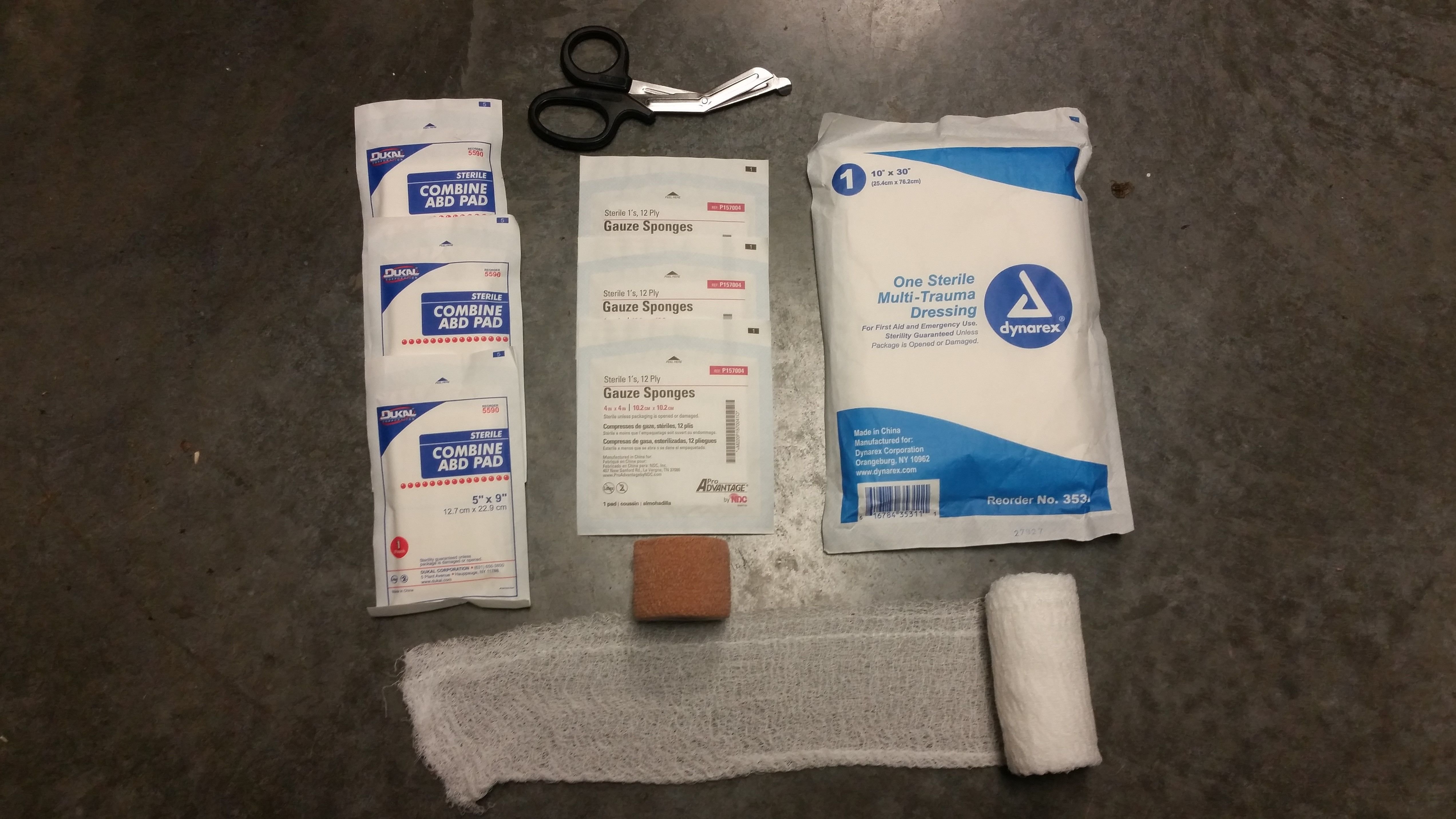
Disclaimer: This post and future medical/health posts by @goatgarden are for educational purposes only and not intended for diagnosis, treatment, or to replace professional hands-on training.
If you are a prepper or homesteader, you have undoubtedly considered emergency first aid a priority. You never know when you might sustain an injury, whether from a pocket knife or a chainsaw, and having some basic supplies on hand is by all means a necessity. So, what should you have on hand? Is a first aid kit from Walmart sufficient? Or do you need more than that? Do you know how to stop bleeding from a severe wound?
As a prepper/homesteader you may have sought out some education on this subject, but if not, you probably know you need to. In my experience as a paramedic, the average person doesn't have even the most basic of these skills. Not everyone was in the boy scouts or the military.
In this post I will begin with what items you should keep on hand. In future posts I will cover more about how to use these items effectively. But, let me be clear. Just reading my posts isn't enough. You can't really develop a skill without training and practice. If you have the opportunity, take a first responder course or EMT course through your local EMS service or Fire Department. Get your hands dirty and your feet wet. Ask your EMS service if they allow people to "ride-along" so you can see it first hand. Get to know experienced professionals and pick their brains a little. It literally may save someone's life.
So, down to the nitty-gritty details...
I bought a first aid kit. I'm good, right???"
Not necessarily. In fact, probably not at all. There are some decent kits out there these days, but most locally purchased first aid kits have items you already have on hand at home, and very little in the way of real necessities. Band-aids, triple antibiotic ointment and tylenol are not what you need to treat a serious injury. Someone throws these items in a handy red pouch with some 2x2 gauze and a roll of gauze wrap and overcharges you, leaving you with the illusion that you are ready for anything. If you cut your leg with a chainsaw, you will quickly find out otherwise.
So what do I need?
Lets start with the basics. GLOVES. Always protect yourself when treating someone else. We often tell patients who seem offended that we wear gloves, "I wouldn't work on my own grandmother without gloves on." And it is true. Even if I wasn't concerned with bio-hazards, who wants someone's blood on their hands? Would you pick their nose for them? You can get latex or non-latex, from small to XXL. I recommend non-latex, as many people have an allergy to latex.
Basic Bandaging Supplies
4x4 gauze bandages (For the smaller cuts)
5x9 gauze bandages (For the "little bit bigger" cuts. These will take care of most lacerations.)
---consider buying "Telfa" no-stick bandages for easier dressing changes---
10x30 trauma dressings (For the big ones. These are big and you won't likely use them often)
Rolled gauze (For wrapping the wound after dressing with above bandages)
Coban Self Adherent Wrap (Looks like a small "ace" bandage wrap. It sticks to itself and is perfect for over-wrapping after rolled gauze has been applied. It eliminates cutting and tying or taping the gauze. This is sold as horse wrap at farm stores and comes in many colors.)
EMS scissors (They will cut through clothing, seat belts and even wire if necessary.)

Cost
Most of the items in this list will cost $5-$10 USD. You can get it all on ebay and buy a quantity that will replenish for several uses. If you have fellow homesteaders or preppers, consider buying together to offset the cost. Divide these items into different kits. One for the house, one for the car, one for the tractor...you get the idea.
Wait...that's it?
Certainly not, but it is a good start. I will continue to add items in future posts, as well as instructions on how to perform the skills for treating basic injuries. But, remember, this is for educational purposes only!
Input from you?
Are there certain items or skills you would like covered or demonstrated in this series? Remember, I'm trying to stay basic here, so we won't be covering amputations or gall bladder removals.
